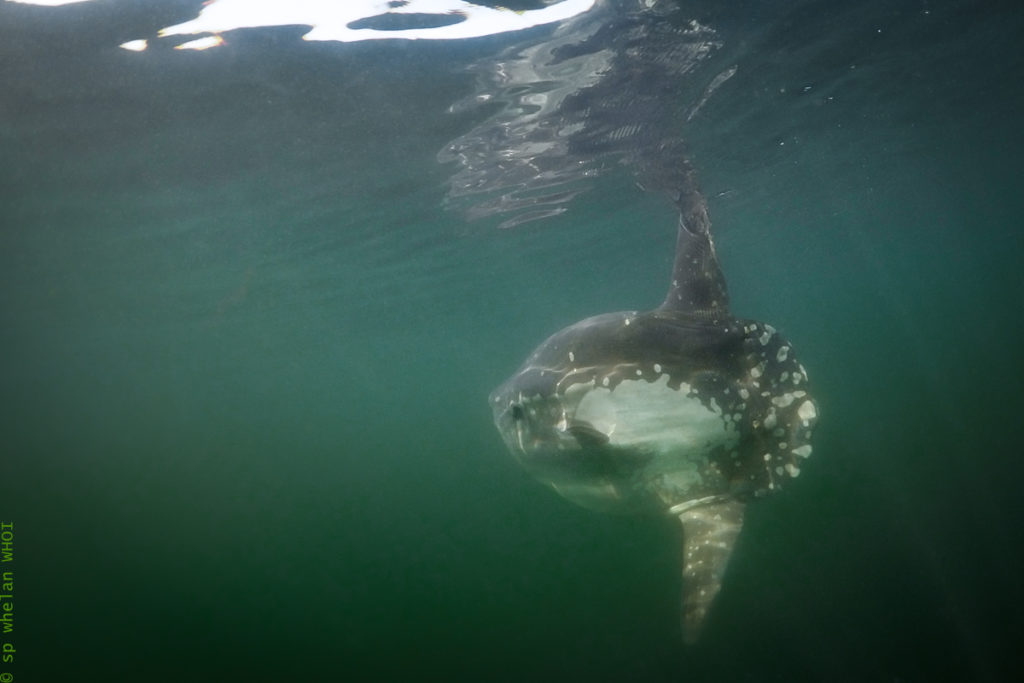Foraging ecology of ocean sunfish and leatherback sea turtles
Collaborators: J. Logan, I. Potter & K. Carson
We are comparing the foraging ecology of the giant ocean sunfish, Mola mola, and leatherback sea turtles, Dermochelys coriacea, in the Northwest Atlantic Ocean. These large marine predators swim thousands of kilometers from their subtropical and tropical winter habitats to exploit feeding grounds off New England during spring, summer, and fall. While studies of leatherback movements and foraging ecology have increased over the past decade, few such studies exist for ocean sunfish and the ecology of the species remains largely unknown. Though not a commercially important species in most regions, M. mola has a worldwide distribution and high bycatch levels in longline and driftnet fisheries targeting tuna and swordfish in the Mediterranean, Pacific, and Atlantic Oceans. It is critical to understand the trophic ecology of M. mola and the potential ecosystem-level impacts of these high bycatch levels, particularly in the broader context of ecosystem-based management of these fisheries.

Mola mola in Cape Cod Bay, Massachusetts. Photo by Sean P. Whelan/WHOI
Though it is believed that ocean sunfish feed primarily on gelatinous zooplankton, no comprehensive diet studies have been conducted. Historical literature suggests that M. mola are primary or obligate gelatinous zooplanktivores, but the few published reports of gut contents indicate a wide range of prey items in addition to gelatinous zooplankton including algae, small fishes and crustaceans. The primary objective of our proposed study is to gain insight into the feeding ecology of M. mola in the Northwest Atlantic using stable isotope analysis (SIA). We are currently analyzing tissue samples from stranded and free swimming ocean sunfish, leatherback sea turtles and gelatinous zooplankton, all collected from a common feeding area.
Funding Agencies
The Lerner-Gray Fund for Marine Research supported this project.

Partners/Collaborators
This is a joint project with Massachusetts Division of Marine Fisheries and the New England Coastal Wildlife Alliance.
Research Papers
- More coming soon!
- Leatherback turtle and jellyfish SIA in Marine Biology
- Ocean sunfish diet SIA (comment paper) in Journal of Fish Biology